Walking Through Athens: A Cultural Journey Beyond the...
From historic landmarks to edgy street...
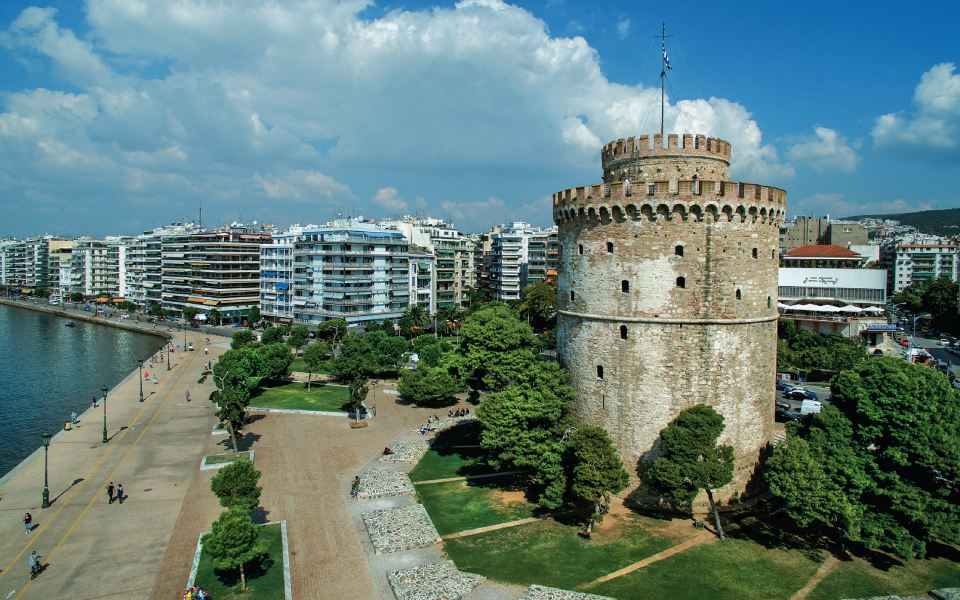
The White Tower
© Sakis Gioumbasis/Ministry of Culture & Sports, Prefecture of Thessaloniki
In 1913, the tower was draped in black as the city mourned King George I. A year later, it escaped demolition because the cost of knocking it down was too high. In 1941, images of houses and trees were painted on it to hide it from enemy aircraft.
It was in the late 15th century that the Turks, having conquered the city in 1430, decided to build a tower to protect what was a critical part of their empire. The White Tower, 33.9m high and 21.7m in diameter, was one of three towers raised along the city’s sea wall; it replaced an older tower which had been part of the Byzantine fortifications.
The White Tower is made up of two cylindrical structures, one inside the other. It’s seven stories high and there are 92 steps to the top. Natural light enters its small rooms through 40 windows. It is built of bricks, stone and mortar.
On October 18, 1912, Lt. Nikolaos Votsis of the Greek Navy, in a daring sea raid, sank the Turkish battleship Feth-i Bulend anchored in the city’s port. The mast of that ship was installed at the top of the Tower and used as a flagpole for the Greek national colors after the city was liberated on October 26, 1912.
During World War I, the tower was used to store antiquities from excavations conducted by the Allied Army of the Orient, which traveled with its own archaeological unit. Later, the tower housed Thessaloniki’s air defences, the meteorological station of the city’s university, and hosted Sea Scouts.
The tower, a place of execution, was long known as the “Tower of Blood”. It was renamed the “White Tower” (“Beyaz Kule”) when Sultan Abdul Hamid II ordered it to be painted white in an attempt by the Ottoman Empire to show a reformist face towards the Great Powers. The convict Nathan Guidili painted the entire tower in exchange for his freedom.
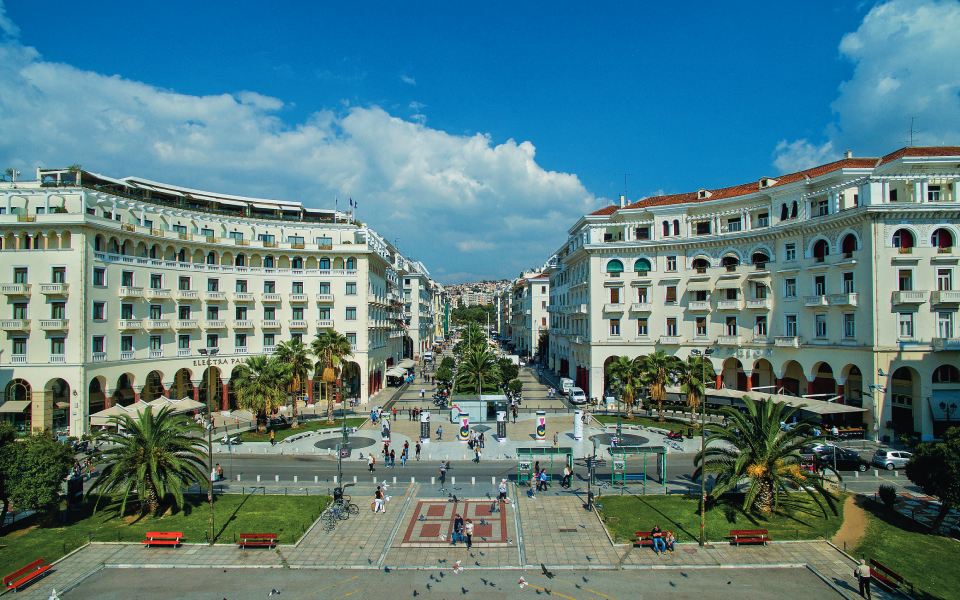
Aristotelous Square
© Sakis Gioumbasis
The Electra Palace Hotel recently completed its latest renovation. Its construction began in 1962 and was completed ten years later. It included anti-earthquake features uncommon at the time. Its semicircular façade is dominated by neo-Byzantine features and characteristic arches, while the interior hides neoclassical elements, with luxurious wood paneling, marble floors and ornate furniture.
The Great Fire of 1917 left its mark on the city, destroying more than half of Thessaloniki and necessitating its regeneration. The talented French architect Ernest Hébrard drew up designs using Aristotelous Street to join Ano Poli (the “Upper City”) to the seafront. He wasn’t able to complete his plans, however, and most of the square was built in the 1950s.
From the air, Aristotelous Square looks like a bottle, which explains why it was featured in the global “Absolut Cities” advertising campaign for the well-known vodka brand.
Externally, the Olympia Theater closely resembles the Electra Palace, thanks to its arched cloisters and characteristic colonnades. Its interior, however, is entirely different; this two-screen cinema has hosted the Thessaloniki Film Festival since 1960.
The square is a landmark popular among visitors and locals alike, and the traditional place to celebrate New Year’s Eve. Hidden in a corner of the square is sculptor Georgios Georgiadis’ statue of Aristotle; it depicts the renowned philosopher holding a scroll. He seems to be gazing over the passersby and street vendors.
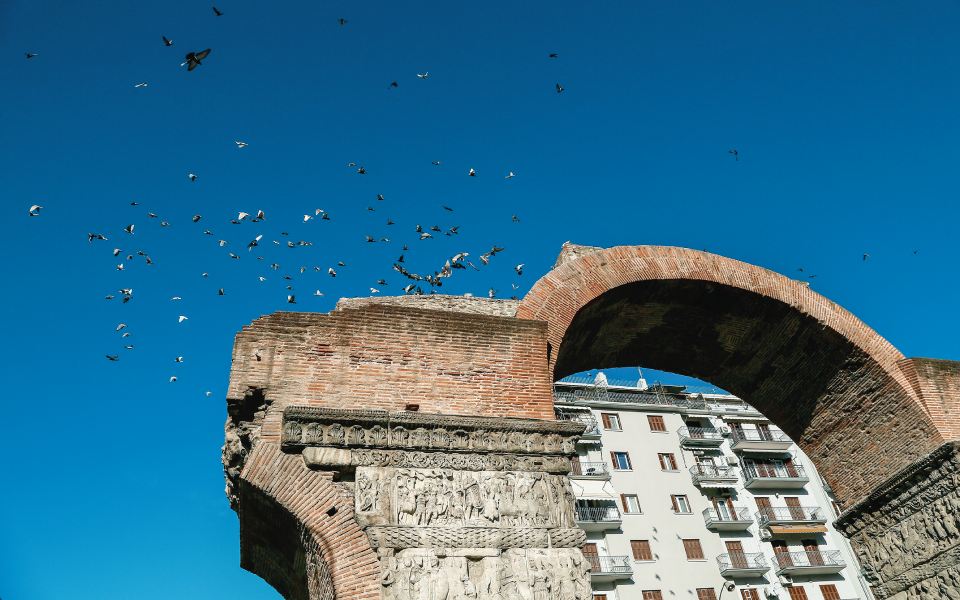
Kamara
© Sakis Gioumbasis/Ministry of Culture & Sports, Prefecture of Thessaloniki
Galerius’ triumphal arch, known today simply as Kamara, (the Greek word for “arch”), is the only surviving element of a larger monument. In its original form, it had eight gateways and as many arches, celebrating Galerius’ return from victory over the Persians.
The Via Egnatia, a key road of the Roman Empire, passed beneath the arch.
The Thessaloniki tram used to pass beneath the arch. In 1954, the tram line was moved to neighboring Egnatia street, and the lowering of the Street level revealed the bases of the columns.
The arches of the Kamara each tell their own story, depicting Galerius’ military victories against King Narses of Persia.
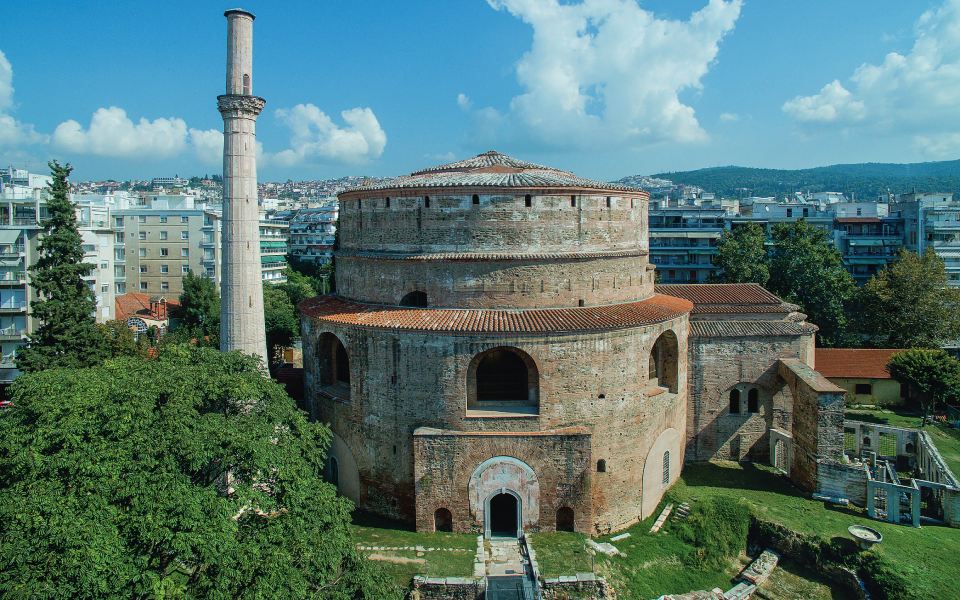
The Rotunda
© Sakis Gioumbasis/Ministry of Culture & Sports, Prefecture of Thessaloniki
During Ottoman rule, a muezzin would climb the 129 steps of the minaret to call the faithful to prayer. The conical roof and part of the top section of the 35.85m minaret, built in the same style as the minarets added to the Hagia Sophia by Selim II, were destroyed by an earthquake in 1978.
The Rotunda stood at the end of the processional route connecting the Arch of Galerius with the emperor’s palace, the ruins of which are visible in Navarino Square, a well-known student hangout.
The public was allowed back into the Rotunda in 2015, after 40 years of closure for restoration and conservation work. Today, the Rotunda is one of Thessaloniki’s brightest monuments and functions both as a museum and as a venue for classical music concerts. It is dedicated to Saint George, and celebrates his feast day on April 23.
The Rotunda is one of the most multicultural monuments in Thessaloniki. Galerius built a circular structure that resembled the Pantheon of Rome. When it was first built (about AD 306), it functioned as a temple to Zeus; it was subsequently converted into a Christian church, and later into a mosque by Sheikh Suleyman Hortaji Effendi.
The frescoes in the interior of the Rotunda date to the early 5th C., and the saints depicted are those who were martyred during the reign of Diocletian and Maximian. The surviving mosaics depict geometric shapes, animals, birds and plants, and are decorative in nature.
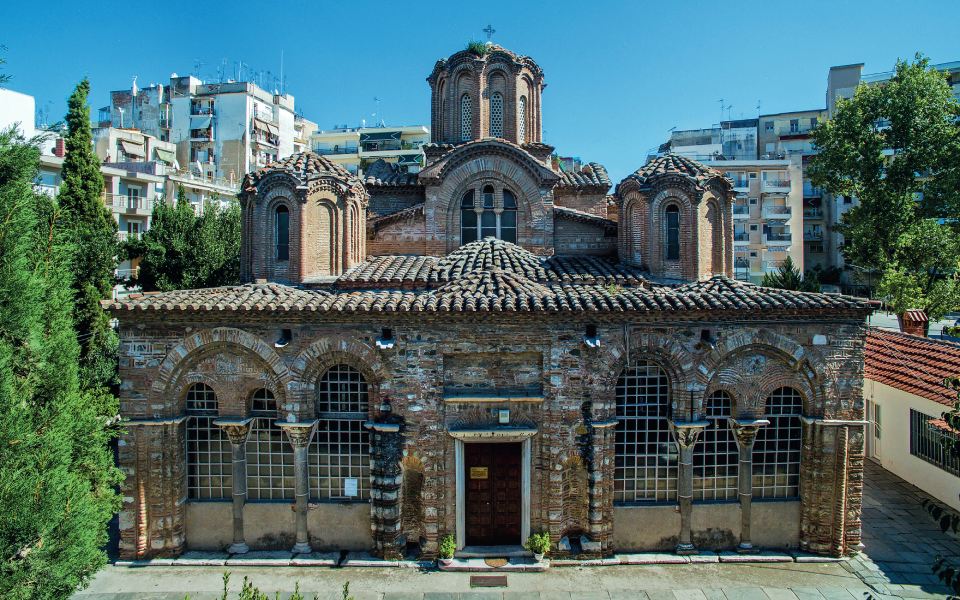
The Church of the Holy Apostles
© Sakis Gioumbasis/Ministry of Culture & Sports, Prefecture of Thessaloniki
The church is an architectural masterpiece and a unique remnant of the Paleologos era (1261- 1453), with the mosaics and frescoes that survive in fragments comprising the last extant example of a fresco scheme from before the decline of the Byzantine Empire. According to legend, the church was dedicated to the Holy Apostles because it seemed to have 12 domes; however, it has only five.
Built between 1310 and 1314 by Patriarch Nephon I and his pupil Hegumenos Paul, this church was originally the katholikon (main church) of a well populated monastery.
The church was converted to a mosque in 1530, and was renamed after Pasha Cerezi Kasim. The church’s large cistern was the reason that it became known informally as Soguk Su, the Mosque of the Cold Water.
The mosaics and frescoes were covered with plaster when the church was converted to a mosque. The renovation of the church, and the restoration of the frescoes, started in 1929; the mosaics were cleaned in 2002.
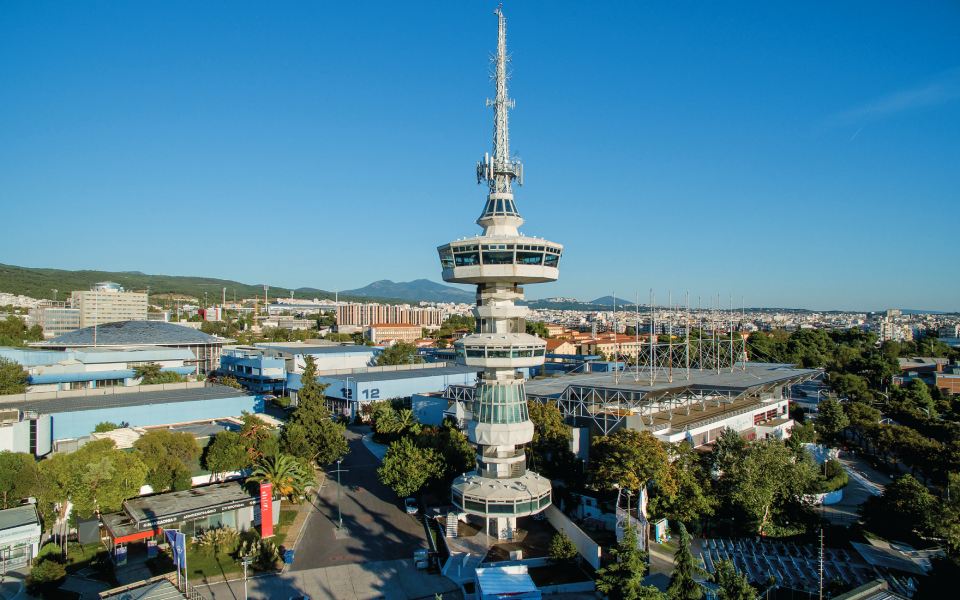
The OTE Tower
© Sakis Gioumbasis/Ministry of Culture & Sports, Prefecture of Thessaloniki
The top of the tower, which has four levels, reaches a height of 72.4 meters. For many years, it was associated with “Radio Thessaloniki,” which had its studios on the fourth floor.
The composer Theodoros Antoniou’s electronic composition “Telecommunications 1970,” commissioned by OTE, was first heard here.
The OTE Tower opened in the late ‘60s, and its ground floor served as the pavilion for OTE, the Greek telecommunications company, during the Thessaloniki International Fair. It was built to a design by architect Alexandros Anastasiadis and, when completed, transmitted the first programs (black-and-white) on Greek public TV. At the time, the rotating floor was a major engineering achievement.
The tower lay derelict for some time before it was renovated in 2005. Today, there is a café on its rotating fourth floor that offers magical views across the city – each rotation takes about an hour. It remains the only rotating café in Greece.
From historic landmarks to edgy street...
Landmark shops, a lively cultural scene...
Discover how ancient Greek architecture inspired...
The West Wall Collective revitalizes Thessaloniki’s...